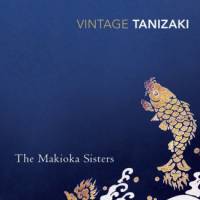Junichiro Tanizaki may be best known for novels featuring protagonists with odd obsessions, but his masterpiece, family epic "The Makioka Sisters," has been hailed by many as Japan's greatest modern novel.
The Makioka Sisters, by Junichiro Tanizaki, Translated by Edward G. Seidensticker.
Vintage Books, Fiction.
It is Tolstoyan in length and scope. It gives an intricate portrait of a family in transition in the years 1936 to 1941; an upper-middle-class family from Osaka coming face to face with the changing world in the years preceding the attack on Pearl Harbor. It is a great character study of four very different sisters and the people in their lives, all the while revealing in great detail the attitudes and mores of Japanese society.
In this sense, it also reads like a Jane Austen novel, with its tale of an arranged marriage intended to restore the family name, no matter the emotional cost for the bride in question.
The story focuses on the family's attempts to find a husband for Yukiko, the third of four sisters. Yukiko is representative of the past and all the traditions associated with it, while the youngest sister, Taeko, represents the future and the possibilities suggested by modern society. The two siblings are contrasted with one another throughout the novel.
The tone of Tanizaki's writing is leisurely, meditative and full of elaborate observations about life and society at that time. Overall, there is a feeling of loss; it can be seen as an elegy to the receding aristocratic way of life as it gives way to the modern rendition.
Read archived reviews of Japanese classics at jtimes.jp/essential.



















With your current subscription plan you can comment on stories. However, before writing your first comment, please create a display name in the Profile section of your subscriber account page.